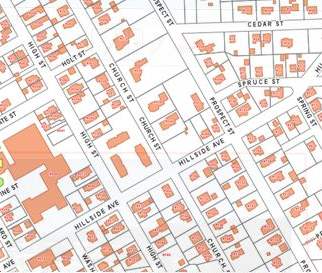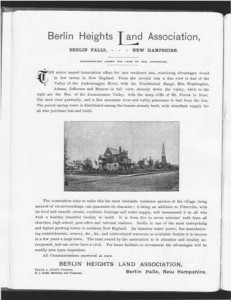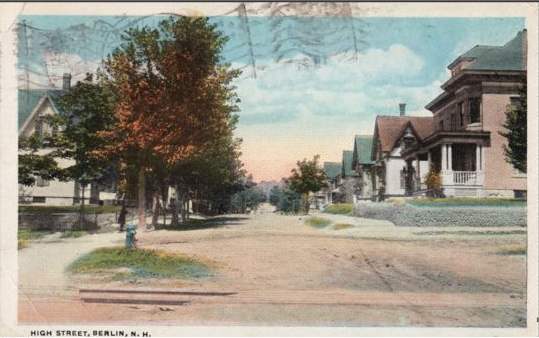What was arguably Berlin’s premier neighborhood, the original 82-lot Berlin Heights subdivision, was platted in 1890 by the Berlin Heights Land Association. The trapezoidal-shaped area included lots (part of the 100-200 blocks) on Prospect, Church, High Streets and lots on Hillside Avenue (parts of the 200 and 300 blocks). The latter ran roughly through the center of the area. The President of the Berlin Heights Land Association was Dr. Frank A. Colby, its Secretary and Treasurer was lawyer Herbert I. Goss. An 1890 advertisement for it (see below) promoted the fine views and panoramas of the mountains, as well as the “purest spring water in abundant supply”……
“The association aims to make this the most desirable residence portion of the village, being assured of its surroundings, can guarantee its character; it being an addition to Fiberville, with its level and smooth streets excellent drainage and water supply, will recommend it to all who wish a healthy, beautiful locality to build. It is from five to seven minutes walk from all churches, high school, post office and railroad stations…..The tract owned by the association is in situation and locality unsurpassed, and can never have a rival.” “Northern New Hampshire and its Leading Business Men”)
Berlin Heights did in fact acquire the reputation as Berlin’s “most desirable” neighborhood. In subsequent years there were multiple “Berlin Heights Additions” some of which were adjacent to Berlin Heights and some of which were located on the other side of the railroad tracks in The Avenues. Of the former, Berlin Heights Addition Plan A (1891) included properties to the east of Berlin Heights, including land on Winter, Cedar, Spruce, Elm, Poplar and Guilmette. Plan B was a small plat north of Berlin Heights. Plan C included a large area north of Hillside (and west of Berlin Heights) with addresses on Memorial, Park, State, Pine Willow, Willard and Madison. Given the many “Berlin Heights Additions” surrounding the original Berlin Heights, what people referred to as “Berlin Heights,” eventually grew to include a larger, geographical area that included the adjacent “additions.”





 Follow
Follow